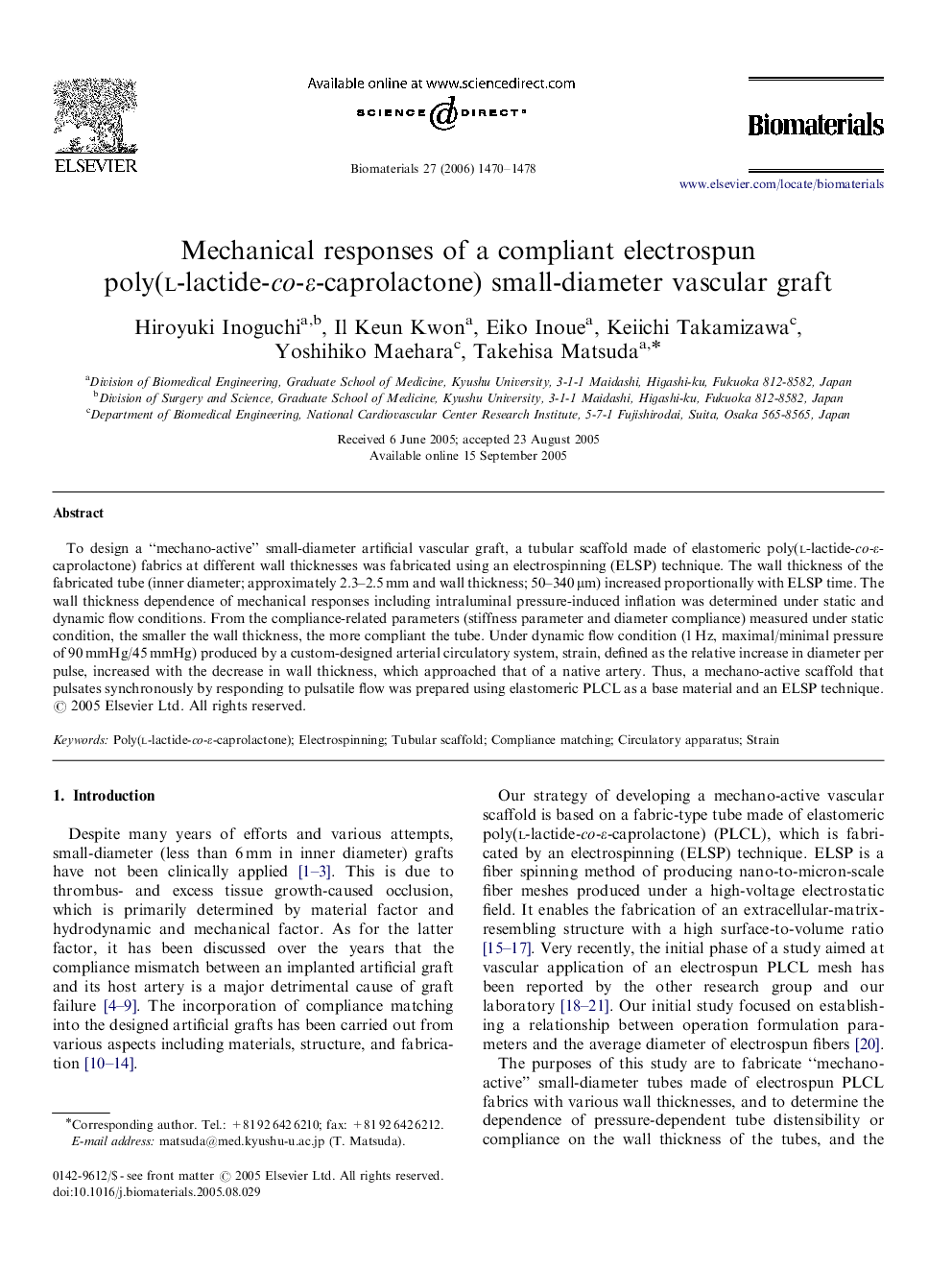| Article ID | Journal | Published Year | Pages | File Type |
|---|---|---|---|---|
| 11557 | Biomaterials | 2006 | 9 Pages |
To design a “mechano-active” small-diameter artificial vascular graft, a tubular scaffold made of elastomeric poly(l-lactide-co-ε-caprolactone) fabrics at different wall thicknesses was fabricated using an electrospinning (ELSP) technique. The wall thickness of the fabricated tube (inner diameter; approximately 2.3–2.5 mm and wall thickness; 50–340 μm) increased proportionally with ELSP time. The wall thickness dependence of mechanical responses including intraluminal pressure-induced inflation was determined under static and dynamic flow conditions. From the compliance-related parameters (stiffness parameter and diameter compliance) measured under static condition, the smaller the wall thickness, the more compliant the tube. Under dynamic flow condition (1 Hz, maximal/minimal pressure of 90 mmHg/45 mmHg) produced by a custom-designed arterial circulatory system, strain, defined as the relative increase in diameter per pulse, increased with the decrease in wall thickness, which approached that of a native artery. Thus, a mechano-active scaffold that pulsates synchronously by responding to pulsatile flow was prepared using elastomeric PLCL as a base material and an ELSP technique.
